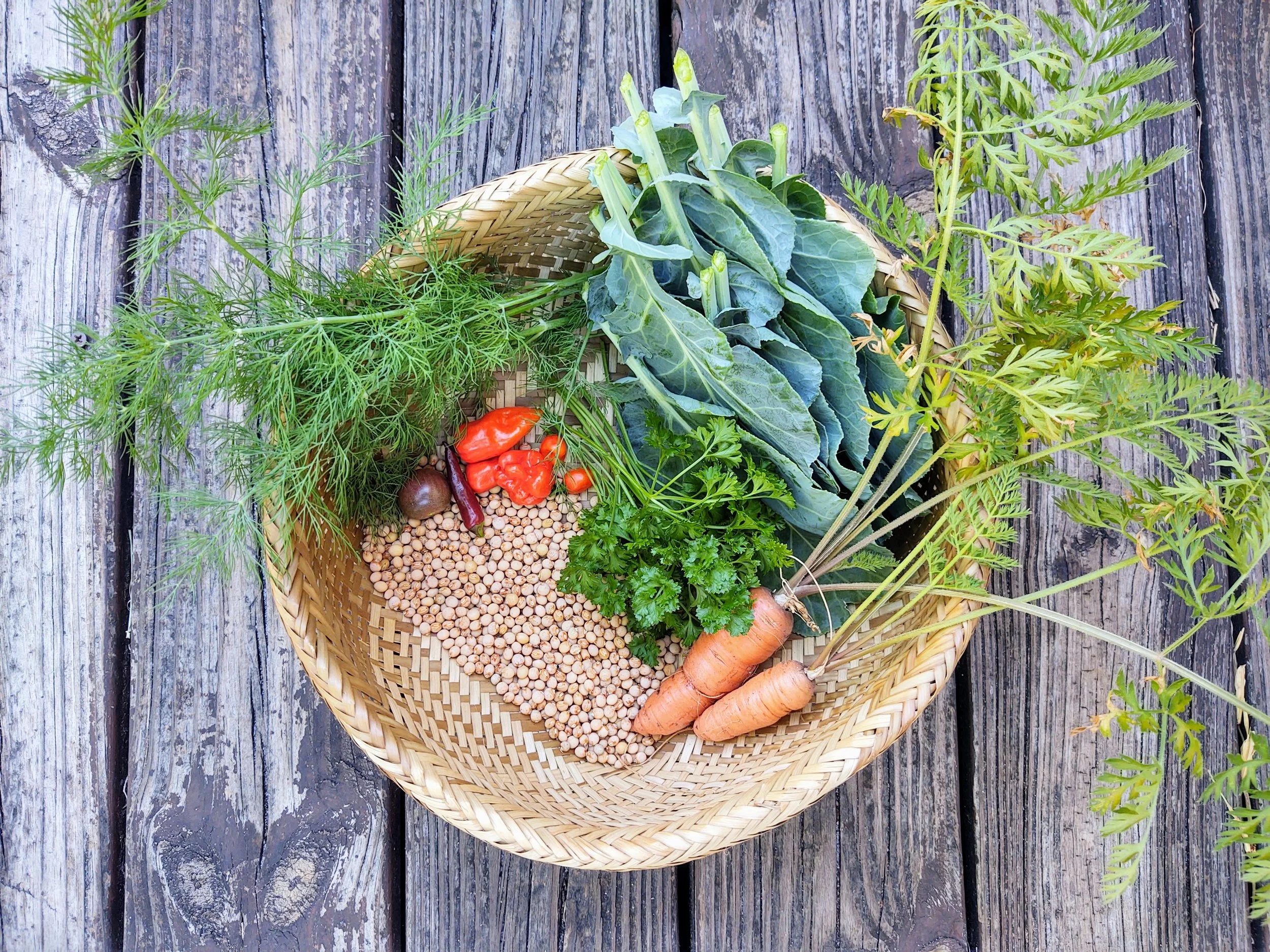2023 - A Year of growth
A textual and graphical summary of our harvests throughout the year
This past year was full of growth, both in the garden as well as in our knowledge and experience. We had many firsts and an overall increase in the amount of food harvested from our suburban plot of about 0.2 acres.
45.0 lbs
We harvested a total of 45.0 lbs of food in 2023!
More than 27 types of food
From carrots and collard greens, to herbs, miracle berries, papaya, and pomegranate, we harvested 27 types of veggies, fruits, leafy greens, and mushrooms. Digging down to specific varieties, that number becomes even greater. In the category we call herbs, we had over 12 types including cilantro, lemon grass, and garlic chives. We grew six different varieties of tomatoes and 11 different peppers.
45 weeks with something to Harvest
Out of 52 weeks in the year, at least one thing was harvested in 45 of them!
We harvested lots of things for the first time this year! Galangal, strawberries, guava, sweet potatoes, and figs were new some of the new additions to the harvest data records.
11 new harvests
Growing a food forest takes time. But it also takes experimentation and observation. While we grew less of things like annual beans and kale, we grew way more of other crops. Pigeon peas (technically a bean) are a short-lived perennial, but they live a lot longer than other annual beans and produce so much food, all while fixing nitrogen and providing trimmings and pod casings as biomass for mulch or composting. We grew collards over kale this year. While both have been similarly successful for us, I think I prefer eating collards. Having the plants in our garden beds meant we could harvest fresh leaves many times whenever we wanted, instead of buying them at the store!
We had more potato and sweet potato success, and will continue to expand upon such calorie, fiber, and nutrient-dense foods like them. We added fig, guava and pomegranate trees, and somehow got fruit off all of them! Those will continue to be a success into the future. Our galangal is taking off and will be a great addition to our turmeric and ginger.
We had more papayas and mulberries than last year, and should continue to see more success with those fruits too. Looking forward, we should start to see mangoes in the next year or two. We have fruit on two banana plants and will be able to harvest those early next year. We add blackberry bushes and a peach tree, and more garden beds for annual crop production.
All this growth means more and more compost production and thus more growth, and the circle continues. It seems like a lot to fit so much onto such a small plot of land, and even I’m surprised by our success in only a few short years. Experimenting and observing this year, means we can experiment and observe differently next year, applying what we learned. We learned what we like to eat, what has been doing well with little maintenance, what provides lots of food, and what has other beneficial uses besides. Maybe we grow a mix of kale and collards. Maybe I grow radishes more intensely since I dropped the ball on them this year. Maybe I’ll fit in even more native plants for the insects and birds, and find room for a few more perennial food plants. Each observation and knowledge gained opens up even more opportunities. Let’s see what 2024 brings!
Imagine if every grassy suburban lawn was converted to food production in some way! Imagine if instead of HOAs hiring lawn care companies to pollute our waters and kill our wildlife with pesticides and herbicides, they hired Food Forest Maintenance companies. Image the monoculture farmlands that could be converted back to wild landscape or smaller, denser, yet more productive farms. Imagine how much cooler and shaded our neighborhoods would be, and how much more beautiful they would look. Imagine food waste collection just as there is trash and recycling, and imagine getting compost in return to use in your garden. The diversity and abundance of nature is infinite, and the energy from the sun should be around a quite a long long long time. We just have to imagine how to harness it all.
Comparing harvests
Take a look at the differences between 2023 and 2022 with the following graphs!
(Note: All 0% harvests are simply rounded down from numbers less than %1)
2022
28.0 lbs
2023
45.0 lbs
Chart contains 53 weeks because last day(s) of the year fell in the first week of the following year.
Harvest Gallery
Check out some of my favorite harvest photos from 2023!
Harvest Summary Archive
-

2022
-

2023







































